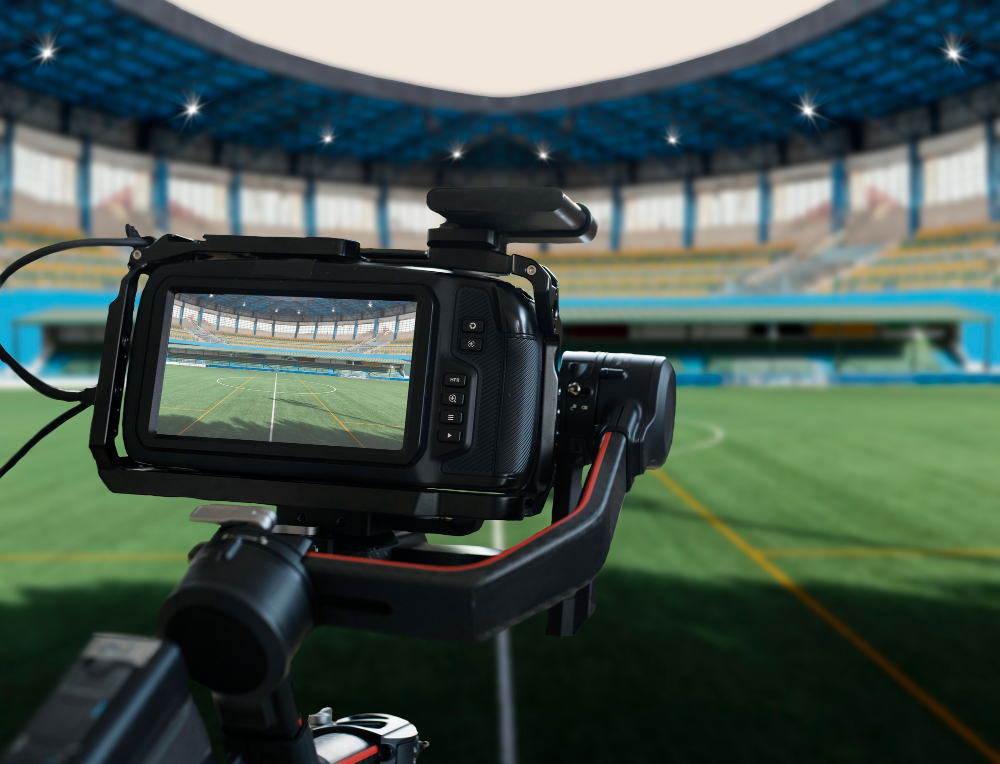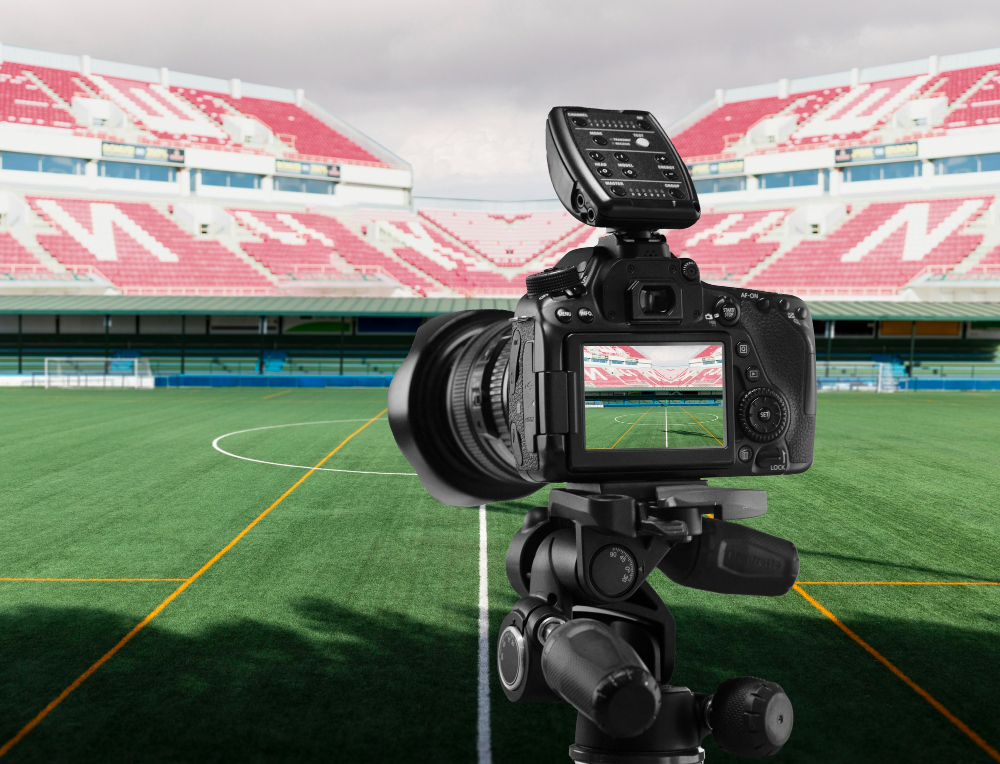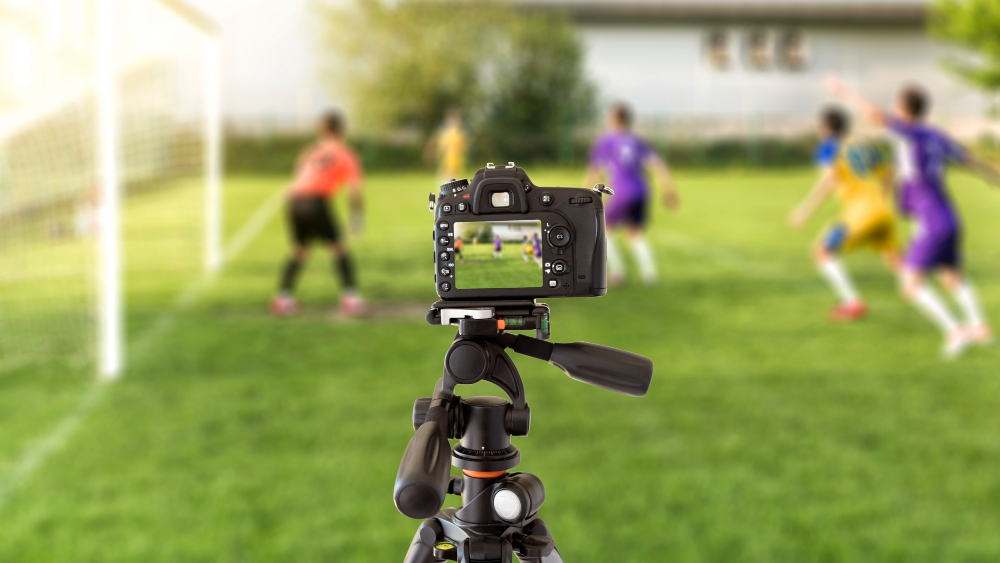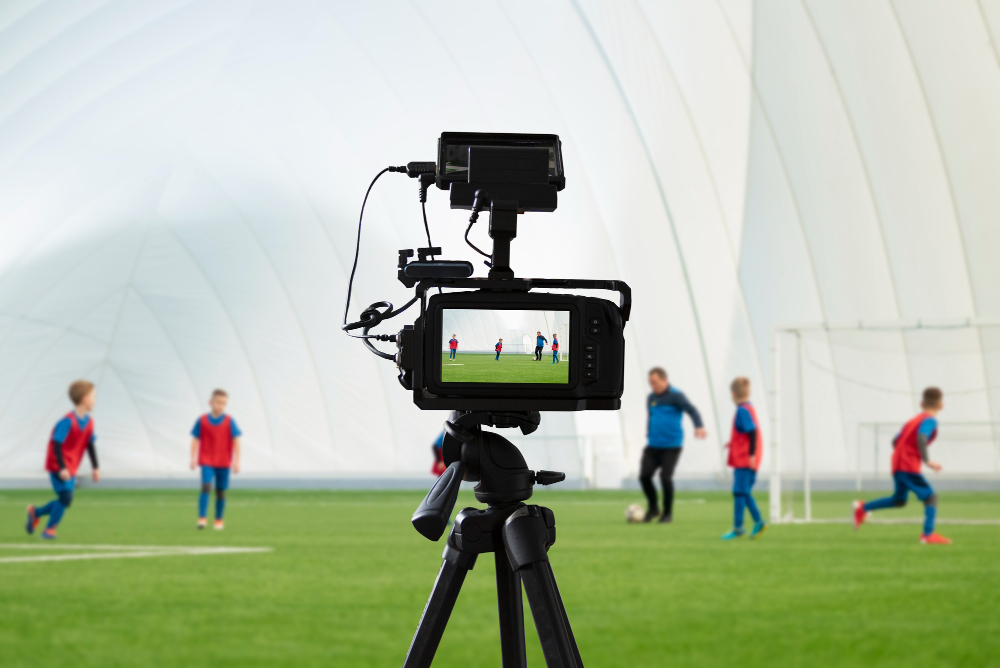Brief overview of the importance of sports filming
Sports filming plays a pivotal role in capturing and immortalizing the essence of athletic prowess, skill, and emotion. In the contemporary era, where sports have transcended mere physical contests to become global entertainment phenomena, the importance of sports filming cannot be overstated.
It serves as a conduit for fans worldwide to experience the intensity of live competitions, enabling them to relive breathtaking moments, awe-inspiring feats, and heart-stopping victories. Beyond mere documentation, sport filming has become an art form, influencing the narrative and storytelling aspects of sports coverage.
It allows for a closer examination of intricate plays, individual brilliance, and the camaraderie that defines team sports. Moreover, sports filmmakers contribute significantly to the development of sports culture, turning athletes into icons and competitions into sagas.
In essence, sports filming serves as the bridge between the arena and the audience, enhancing the overall experience and fostering a deeper connection between sports enthusiasts and their favorite games.
The role of Vantage Point in capturing dynamic and compelling sports footage
The role of vantage points in capturing dynamic and compelling sports footage is nothing short of transformative. Vantage Point, essentially the chosen perspective from which an event is filmed, play a crucial role in shaping the narrative and visual impact of sports coverage.
The strategic selection of vantage points allows filmmakers to immerse viewers in the heart of the action, providing an up-close and personal experience that transcends the limitations of a static camera.

Elevated positions offer sweeping views of the entire playing field, emphasizing the strategic maneuvers and team dynamics, while sideline perspectives bring the audience into the midst of the adrenaline-pumping moments and emotional exchanges between athletes. Behind-the-scenes vantage points provide a unique glimpse into the preparation, emotions, and interactions that unfold away from the spotlight.
The art of choosing vantage points is, therefore, an intricate dance between storytelling, aesthetics, and capturing the raw intensity that defines sports, contributing significantly to the creation of dynamic and compelling sports footage that resonates with audiences worldwide.
Importance of knowing the sport and its dynamics
Understanding the intricacies of a sport and its dynamics is paramount for anyone involved in sports filming. This knowledge forms the foundation upon which compelling and accurate footage is built.
Filmmakers who comprehend the rules, strategies, and nuances of a particular sport can anticipate pivotal moments, ensuring that their camera work is synchronized with the ebb and flow of the game. Familiarity with the sport’s dynamics enables filmmakers to predict athlete movements, highlight key plays, and capture the essence of the competition with precision.
Moreover, this knowledge allows for the selection of vantage points that maximize the visual impact of critical moments. Whether it’s a strategic maneuver in football, a breakaway in soccer, or a slam dunk in basketball, an in-depth understanding of the sport ensures that the camera is in the right place at the right time.
Ultimately, the importance of knowing the sport and its dynamics transcends technical proficiency; it becomes a means to authentically convey the passion and excitement that define sports to the audience.
Factors to Consider when Choosing Vantage Points
Choosing the right vantage points in sports filming requires a thoughtful analysis of several crucial factors, each contributing to the overall success of capturing compelling footage.

A. Importance of Knowing the Sport and its Dynamics:
- Strategic Insights: A deep understanding of the sport’s rules, strategies, and player movements allows filmmakers to anticipate critical moments. This knowledge helps in positioning cameras to capture game-changing plays and the emotional highs and lows of athletes.
- Highlighting Key Elements: Different sports have distinct focal points – be it the goalposts, finish line, or center court. Knowing these key elements enables filmmakers to choose vantage points that emphasize the heart of the action, ensuring that viewers don’t miss crucial details.
B. Consideration of the Venue and its Unique Features:
- Architectural Layout: Each sports venue has its own architectural peculiarities, influencing the available vantage points. Filmmakers need to assess the layout of the venue to strategically position cameras, taking advantage of architectural features for dynamic shots.
- Ambiance and Atmosphere: The ambiance of the venue contributes significantly to the overall viewer experience. Vantage points that capture the energy of the crowd, the scale of the arena, and the overall atmosphere enhance the emotional connection between the audience and the event.
C. Impact of Lighting Conditions on Vantage Point Selection:
- Natural Light Considerations: Filming outdoors presents challenges related to changing natural light conditions. Knowledgeable filmmakers consider the time of day and weather conditions to choose vantage points that optimize lighting for clarity and visual appeal.
- Artificial Lighting Strategies: Indoor venues often feature complex lighting setups. Understanding how artificial lighting interacts with the playing field helps filmmakers select vantage points that minimize shadows, reduce glare, and ensure optimal visibility.
D. Balancing Between Proximity and Overall Field View:
- Close-Up Shots vs. Wide Angles: Filmmakers must strike a balance between close-up shots that capture individual moments and wide-angle shots that provide context. The choice depends on the sport’s nature and the narrative the filmmaker intends to convey.
- Dynamic Perspectives: Experimenting with vantage points that offer unique and dynamic perspectives, such as overhead shots or tracking shots, adds variety to the footage and enhances the overall visual appeal.
E. Adapting to Different Sports and their Specific Requirements:
- Sport-Specific Considerations: Recognizing that each sport has its own set of dynamics, pacing, and critical moments is crucial. Filmmakers must tailor their vantage point choices to suit the specific requirements and nuances of the sport they are capturing.
- Flexibility in Approach: Being adaptable is key, as different sports may demand a diverse range of filming techniques. From the swift movements of soccer to the strategic pauses in baseball, a nuanced approach ensures the footage effectively communicates the essence of each sport.
Challenges and Solutions
Even with a comprehensive understanding of sports dynamics and careful consideration of venue specifics, sports filmmakers often encounter challenges in their quest to capture the perfect shot. Overcoming these obstacles requires creativity, adaptability, and a strategic approach.
A. Common Challenges Faced in Sports Filming with Vantage Points:
- Limited Access: Certain vantage points may be restricted, limiting the filmmaker’s ability to capture specific angles or moments. Overcoming these access limitations requires collaboration with event organizers, teams, or venue management.
- Safety Concerns: Filming in dynamic sports environments can pose safety challenges for both filmmakers and equipment. Managing the risk while still obtaining impactful shots involves meticulous planning, adherence to safety protocols, and the use of reliable equipment.
- Unpredictable Events: Sports, by nature, are unpredictable. Unexpected plays, injuries, or changes in momentum may occur, requiring filmmakers to think on their feet and adjust their vantage points to ensure crucial moments are captured.
B. Strategies for Overcoming Obstacles Related to Access, Safety, and Equipment Limitations:
- Advanced Planning and Coordination: Thorough pre-event planning, including communication with event organizers and teams, helps secure necessary permissions and access. Coordinating with relevant stakeholders ensures a smoother process on the day of the event.
- Strategic Camera Placement: To address safety concerns, filmmakers strategically position cameras using remote control or automated systems, allowing for the capture of close-up shots without compromising safety. Drones and robotic camera rigs are examples of innovative solutions.
- Redundancy in Equipment: Technical malfunctions are a reality in any filming scenario. Having backup equipment readily available minimizes downtime and ensures that critical moments are not missed due to equipment failures.
C. Balancing Creativity with Practical Considerations:
- Risk vs. Reward Assessment: Filmmakers must assess the potential rewards of a unique vantage point against the associated risks. This balance ensures that creative decisions align with safety and logistical considerations.
- Adaptability in Real-Time: Being open to adjusting vantage points on the fly is essential. Filmmakers need to adapt to the unfolding events, making quick decisions to capture unexpected highlights while staying within the constraints of safety and logistical feasibility.

Successfully navigating these challenges not only requires technical expertise but also demands a keen understanding of the evolving dynamics within the sports environment. By developing a repertoire of effective solutions, sports filmmakers can turn obstacles into opportunities, resulting in captivating footage that transcends the limitations imposed by the unpredictable nature of live sports events.
Tips for Amateur Sports Filmmakers
For aspiring sports filmmakers looking to delve into the dynamic world of capturing athletic prowess on camera, there are several valuable tips to enhance their skills and produce compelling footage.
A. Practical Advice for Enthusiasts:
- Study the Sport: Develop a deep understanding of the sport you intend to film. This includes learning the rules, player dynamics, and the flow of the game. Knowledgeable filmmakers are better equipped to anticipate and capture key moments.
- Start with Basics: Begin by experimenting with basic camera techniques before attempting more advanced maneuvers. This gradual approach allows filmmakers to build confidence and competence in their craft.
B. Budget-Friendly Vantage Point Options for Beginners:
- Utilize Fixed Vantage Points: While professional setups may involve elaborate camera rigs, amateurs can achieve remarkable results using fixed vantage points, such as handheld cameras or tripods. Stable footage is often more important than complex camera movements.
- Explore Affordable Equipment: Affordable camera accessories, such as stabilizers for smartphones or entry-level drones, can provide amateurs with access to creative vantage points without breaking the bank.
C. Building a Portfolio and Gaining Experience:
- Film Local Events: Attend local sports events to practice your skills. Filming at smaller, community-level competitions provides valuable experience and allows for experimentation in a less pressured environment.
- Create a Portfolio: Compile a portfolio showcasing your best work. A strong portfolio is essential for building credibility and attracting opportunities to collaborate with local teams, events, or sports organizations.
D. Experimentation Through Trial and Error:
- Try Different Angles: Experiment with various vantage points and camera angles to discover what works best for different sports. Over time, this experimentation will help you develop a personal style and preferences.
- Learn from Mistakes: Accept that mistakes are part of the learning process. Analyze your footage critically, identify areas for improvement, and use each experience as an opportunity to refine your skills.
E. Continuous Learning and Networking:
- Stay Informed: Keep abreast of advancements in sports filming techniques, equipment, and industry trends. Continuous learning ensures that your skills remain relevant and competitive.
- Network with Professionals: Attend industry events, workshops, or online forums to connect with experienced sports filmmakers. Networking provides valuable insights, mentorship opportunities, and access to a community of like-minded enthusiasts.
By combining passion with a commitment to learning and experimentation, amateur sports filmmakers can gradually hone their skills, expand their portfolios, and contribute meaningfully to the vibrant world of sports cinematography. Embracing the journey of continuous improvement is key to developing a unique voice and making a mark in this exciting field.
End Word
In conclusion, mastering the art of sports filming with vantage points is a multifaceted endeavor that blends technical expertise, strategic planning, and a profound understanding of the sports being captured.
Vantage points serve as the lens through which the drama, intensity, and emotion of athletic competitions are conveyed to audiences worldwide. From the towering heights of elevated positions to the intimate proximity of sideline perspectives, each vantage point contributes to the storytelling and visual impact of sports cinematography.
The importance of knowing the intricacies of a sport and its dynamics cannot be overstated, as it forms the bedrock for making informed decisions about camera placement and capturing pivotal moments. While challenges inevitably arise, from access limitations to safety concerns, adept filmmakers navigate these obstacles with creativity and adaptability, turning them into opportunities for innovation.
For amateur sports filmmakers, the journey begins with practical advice, budget-friendly solutions, and a commitment to continuous learning. As technology evolves and the sports filming landscape transforms, embracing new possibilities and networking with industry professionals become crucial for staying at the forefront of this dynamic field. In essence, mastering sports filming with vantage points is a captivating journey of artistry, technical finesse, and a deep connection to the thrilling world of sports.
